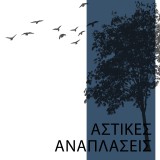Supervisor:
2021
This paper address a considerable amount of abandoned areas and buildings that has been created inEurope. Among these areas there are many military camps. Those camps degrade the areas that are located and for this reason efforts are made to integrate into the urban fabric in order to have a spatial continuity. The conceptual framework of the research highlights the concepts of "Public urban space", "empty urban land", "Urban Renaissance", and the adopted policies of the "brownfield areas". As a first step, the theoretical framework of the above concepts is analyzed with particular emphasis on the way that stakeholders, investors and citizens participate in urban regeneration process. Therefore, defines the municipalities that compose the study area and analyses the history of the degradation and creation of the abandoned urban areas by presenting and mapping them. The next step focuses on inactive military lands and provides examples of these reuse areas or buildings, to highlight the various political actions that have been developed. The paper further focuses on the cases of the former military bases in Greece, particularlyin Athens, Alexandroupoli and Thessaloniki by studying the institutional framework thatmilitary camps have been released to the public. Finally, the paper concludes by quoting a few conclusions drawn from its presented topics, thus a framework of principles is drawn up which will then define the general objectives and areas for an overall reuse strategy, aiming at solving the problems of each area, maintaining physical and psychological public health and improving its microclimate. You will also find an appendix with an Europian map, which delineates the studied military camps, and a table that gathers all the information of these areas.
